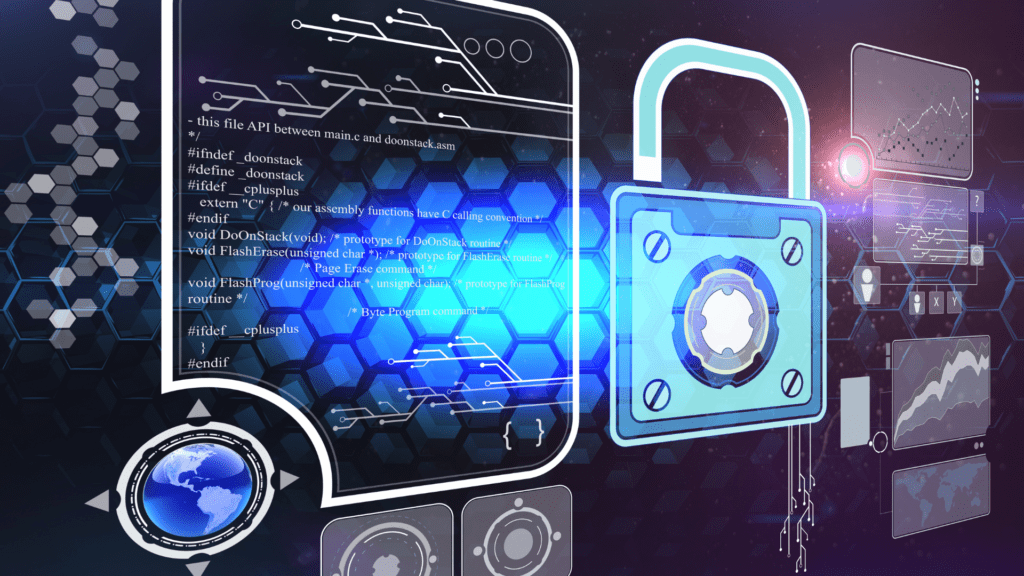What Requirements Apply When Transmitting Secret Information? In a world where cyber threats are on the rise, transmitting secret or sensitive information requires more than just trust. Whether you’re sharing personal data, business secrets, or government intelligence, you must ensure that the information is protected from unauthorized access. This blog post dives deep into what requirements apply when transmitting secret information, how to stay secure, and why these measures are essential for protecting your valuable data.
What Is Secret Information?
Before we explore how to securely transmit secret information, it’s important to understand what qualifies as secret information. This category includes anything that is confidential, private, or sensitive. Some common examples include:
- Personal Data: Your Social Security number, bank account details, health information, and anything that can personally identify you.
- Business Secrets: Marketing plans, customer data, financial records, intellectual property, and employee information.
- Government Data: National security details, classified government documents, and intelligence information.
The loss or theft of this type of information can lead to significant harm, from identity theft to corporate espionage or national security threats. That’s why protecting it during transmission is a critical task.

Key Requirements for Transmitting Secret Information
Now, let’s break down the essential security measures that help keep your sensitive data safe when it’s on the move.
1. Use Strong Encryption
Encryption is the process of converting readable data into an unreadable format that can only be deciphered with a specific decryption key. Think of it as putting your data into a locked box and giving only the right people the key to open it.
- End-to-End Encryption (E2EE): This ensures that data remains encrypted from the sender to the recipient, with no one able to decrypt it during the transmission process. Popular messaging apps like WhatsApp use this form of encryption to keep your conversations private.
- AES (Advanced Encryption Standard): AES is one of the most widely used encryption methods in industries like banking and government because it offers a high level of security. It encrypts data in blocks and is incredibly difficult to break without the correct key.

2. Use Secure Transmission Protocols
When transmitting secret information, it’s not just the encryption that matters. You also need secure communication channels that protect the data during transmission. These secure transmission protocols ensure that your data doesn’t get intercepted by cybercriminals or unauthorized parties.
- SSL/TLS (Secure Socket Layer / Transport Layer Security): This is a protocol that ensures data traveling between two points (such as a website and your browser) is encrypted. When you see “https://” in your browser’s URL bar, it means SSL/TLS is protecting your connection.
- HTTPS (HyperText Transfer Protocol Secure): A more secure version of HTTP, it ensures that the data sent between your computer and a website is encrypted. When accessing banking websites or entering personal data online, look for HTTPS to ensure your information stays protected.
- VPN (Virtual Private Network): A VPN creates a secure, encrypted tunnel over the internet, helping you safely transmit sensitive information. It’s especially useful when using public Wi-Fi networks, like in cafes or airports, where data is more vulnerable to attacks.
3. Authenticate and Authorize
To ensure that only authorized users can send or receive secret information, robust authentication and authorization systems are necessary.
- Multi-Factor Authentication (MFA): This adds an extra layer of security. For example, logging into an account might require something you know (your password) and something you have (a phone for a one-time code). This makes it much harder for hackers to gain unauthorized access, even if they have your password.
- Role-Based Access Control (RBAC): In businesses, access to secret information should be limited based on job roles. For instance, the HR department may have access to employee records, but other employees should not. This prevents unauthorized access within an organization.
4. Choose Secure Communication Channels
Choosing the right communication channel is just as important as the encryption and protocols you use. If the communication channel itself is insecure, your data may be exposed.
- Secure Email: While standard email isn’t the best for transmitting secret information, you can enhance its security with encryption tools like ProtonMail or PGP (Pretty Good Privacy). These services provide end-to-end encryption, ensuring that only the recipient can read the email.
- Encrypted Messaging Apps: For everyday communication, apps like Signal or Telegram provide end-to-end encryption, making them a safe choice for transmitting sensitive information.
- File Sharing Services: Cloud services like Dropbox or Google Drive can also be secured with encryption. However, for sensitive documents, always use encrypted file-sharing tools that add an extra layer of protection.
5. Regular Audits and Monitoring
Even with strong encryption and secure protocols in place, it’s important to monitor the systems and networks that transmit secret information. Regular audits help ensure your security practices are being followed and allow you to spot vulnerabilities before they can be exploited.
- Intrusion Detection Systems (IDS): These systems monitor network traffic for unusual activity, such as unauthorized access attempts, and alert administrators to potential threats.
- Audit Trails: Keeping detailed logs of who accessed sensitive information and when helps organizations track and respond to any security incidents.

What Requirements Apply When Transmitting Secret Information?
Use Strong Passwords
Weak passwords are one of the most common entry points for hackers. When transmitting secret information, ensure that you and your recipients use complex passwords with a mix of letters, numbers, and symbols. Consider using a password manager to generate and store secure passwords.
Train Your Team or Users
If you’re part of a business or organization, educating your employees about the importance of secure data transmission is crucial. Regular training on security protocols and phishing awareness can help prevent mistakes that could compromise sensitive information.
Limit the Sharing of Secret Information
If you don’t need to share secret information, don’t. The fewer people who have access to it, the less chance there is of it being exposed. Adopt a principle of least privilege (PoLP), which restricts access to only those who absolutely need it.
Use Temporary or Self-Destructive Messages
For particularly sensitive information, consider using tools that allow you to send messages that self-destruct after being read, or that are only accessible for a short time. This minimizes the risk of long-term exposure if the data is ever intercepted.
Always Encrypt Files Before Sending
If you’re sending sensitive files, encrypt them before sharing. Many email services and cloud storage platforms allow you to encrypt documents with a password or a public key. Encrypting files adds an extra layer of protection, ensuring that even if intercepted, they cannot be accessed without the proper credentials.
Conclusion
Transmitting secret information is a delicate task that requires careful consideration of security measures. Encryption, secure transmission protocols, and proper authentication are essential elements in ensuring that your data stays safe. Additionally, adopting best practices, such as limiting the sharing of sensitive data and using encrypted communication channels, will further reduce the risk of a breach.
By following these guidelines, you can transmit confidential data securely and confidently, knowing that you are protecting both your privacy and your organization’s sensitive information. In the modern age of cybersecurity threats, taking these steps is not just a choice but a necessity.
FAQs
1. Why is encryption important when transmitting secret information?
Encryption ensures that data is protected by converting it into an unreadable format. Only the intended recipient with the decryption key can access the information, which helps prevent unauthorized access during transmission.
2. What are some examples of secure communication channels?
Examples include encrypted messaging apps (e.g., Signal, WhatsApp), secure email services (e.g., ProtonMail, PGP), and VPNs, which ensure that your communication is safe from interception.
3. What is Multi-factor Authentication (MFA)?
MFA is a security measure that requires more than one method of authentication to access an account or system. It could involve something you know (password) and something you have (phone or hardware token) to provide extra security.
4. Can I transmit sensitive information over email?
While standard email isn’t secure by default, you can use encryption tools like PGP or services like ProtonMail to send secure emails. It’s essential to encrypt the message and ensure that both the sender and receiver have secure channels.
5. How often should I audit my data transmission systems?
Regular audits should be performed to ensure that systems are up-to-date and that there are no vulnerabilities. This includes monitoring access logs and checking encryption methods to ensure compliance with the latest security standards.
